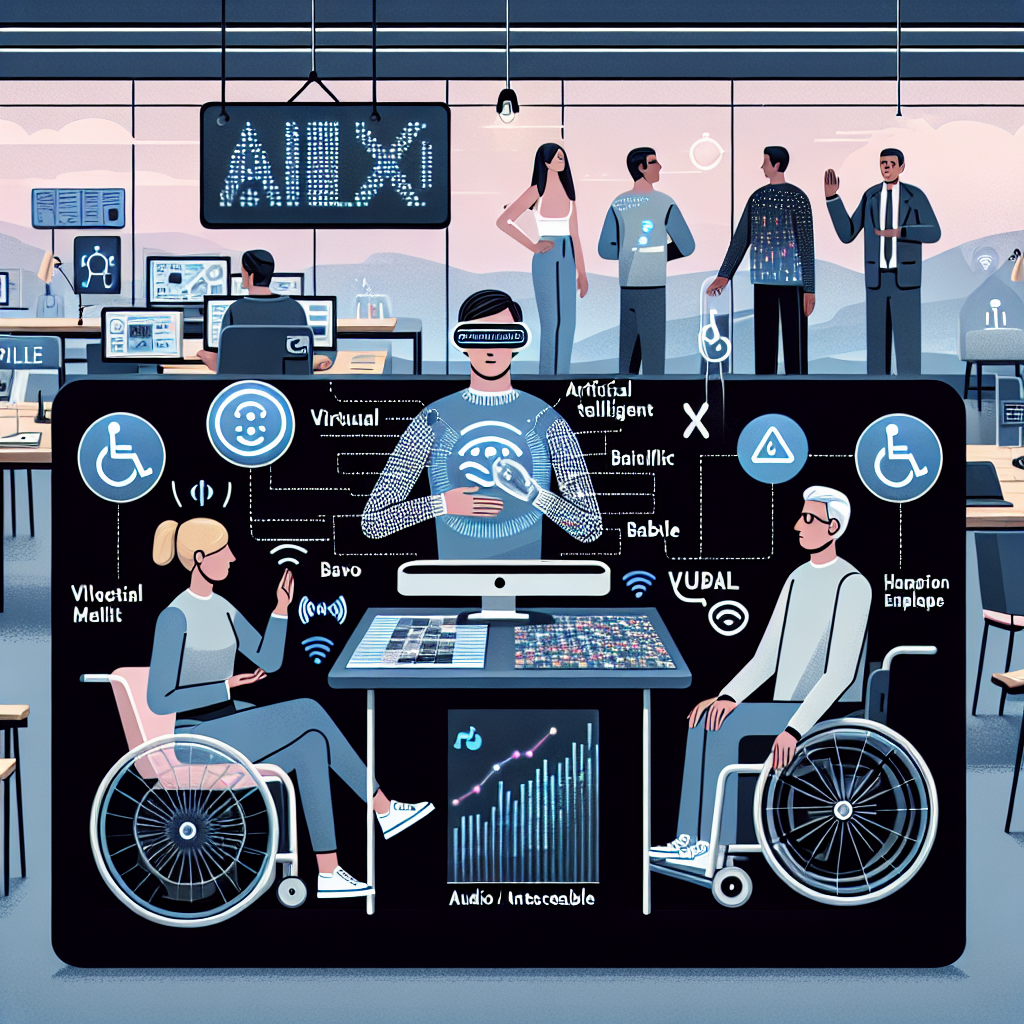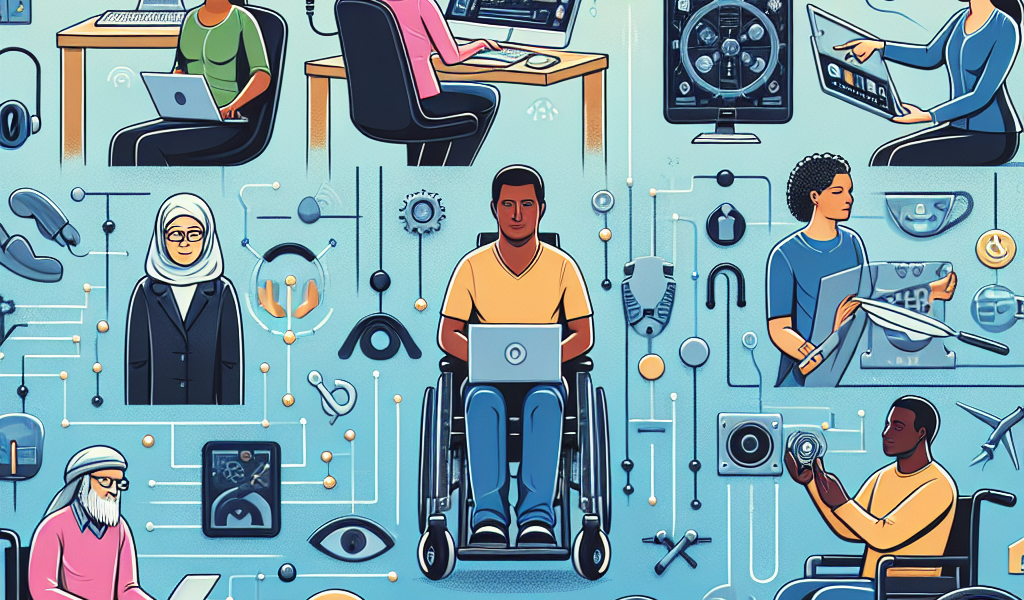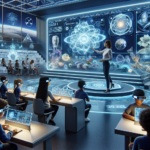-
Table of Contents
“Empowering Inclusion: Tech’s Transformative Role in Accessibility”
Introduction

The Role of Tech in Enhancing Accessibility
In an increasingly digital world, technology plays a pivotal role in enhancing accessibility for individuals with disabilities. By leveraging innovative solutions, tech advancements are breaking down barriers and creating inclusive environments that cater to diverse needs. From screen readers and voice recognition software to adaptive hardware and smart home devices, technology is transforming the way people with disabilities interact with their surroundings. These advancements not only improve the quality of life for individuals with disabilities but also promote greater independence and participation in various aspects of society, including education, employment, and social engagement. As technology continues to evolve, its potential to further enhance accessibility and inclusivity remains boundless, promising a future where everyone can fully engage with the world around them.
Innovations in Assistive Technology for People with Disabilities
In recent years, the role of technology in enhancing accessibility for people with disabilities has seen remarkable advancements. These innovations in assistive technology are not just about convenience; they are about empowerment, independence, and inclusion. As society becomes increasingly digital, the importance of ensuring that everyone can participate fully cannot be overstated. This is where assistive technology steps in, bridging gaps and breaking down barriers that have long hindered individuals with disabilities.
One of the most significant areas of progress has been in communication. For individuals with speech impairments, devices like speech-generating devices (SGDs) have revolutionized the way they interact with the world. These devices, which convert text or symbols into spoken words, have given a voice to those who previously struggled to be heard. Moreover, advancements in artificial intelligence have led to the development of more intuitive and responsive SGDs, making communication smoother and more natural.
Transitioning from communication to mobility, the innovations in this field are equally impressive. Wheelchairs have evolved from simple manual devices to sophisticated machines equipped with sensors and AI. Modern electric wheelchairs can now navigate complex environments autonomously, giving users unprecedented freedom. Additionally, exoskeletons, once a concept confined to science fiction, are now a reality. These wearable devices assist individuals with mobility impairments in walking, standing, and even climbing stairs, offering a new lease on life.
Furthermore, the advent of smart home technology has brought about a revolution in daily living for people with disabilities. Voice-activated assistants like Amazon’s Alexa and Google Home allow users to control lights, thermostats, and even kitchen appliances with simple voice commands. This level of control can be life-changing for individuals with limited mobility, providing them with greater independence and reducing their reliance on caregivers.
In the realm of education, assistive technology has opened up new avenues for learning. Screen readers and magnification software enable visually impaired students to access digital content with ease. Meanwhile, apps designed for individuals with learning disabilities offer personalized learning experiences, catering to their unique needs and helping them achieve their full potential. These tools not only enhance academic performance but also boost confidence and self-esteem.
Employment is another critical area where assistive technology is making a difference. Adaptive software and hardware solutions are enabling individuals with disabilities to perform tasks that were once deemed impossible. For instance, eye-tracking technology allows those with severe physical disabilities to operate computers using only their eye movements. This not only broadens their career opportunities but also fosters a more inclusive workplace environment.
Despite these advancements, challenges remain. The high cost of assistive technology can be prohibitive for many, and there is a pressing need for more affordable solutions. Additionally, there is a lack of awareness and understanding about the capabilities and benefits of these technologies among the general public and employers. Addressing these issues requires concerted efforts from policymakers, tech companies, and advocacy groups.
In conclusion, the role of technology in enhancing accessibility for people with disabilities is transformative. From communication and mobility to daily living, education, and employment, assistive technology is breaking down barriers and creating a more inclusive society. While challenges persist, the progress made thus far is a testament to the potential of technology to change lives. As we continue to innovate and push the boundaries of what is possible, it is crucial to ensure that these advancements are accessible to all, paving the way for a future where everyone can participate fully and equally.
How AI is Transforming Accessibility in Digital Spaces
In an increasingly digital world, the role of technology in enhancing accessibility has never been more critical. Artificial intelligence (AI) is at the forefront of this transformation, offering innovative solutions that are reshaping how individuals with disabilities interact with digital spaces. As we delve into the myriad ways AI is making digital environments more inclusive, it becomes evident that these advancements are not just technological feats but also profound societal shifts.
One of the most significant contributions of AI to accessibility is in the realm of visual impairment. Screen readers, which convert text to speech, have been a staple for visually impaired users for years. However, AI has taken this technology to new heights. Modern screen readers powered by AI can now understand context, interpret images, and even describe complex scenes. For instance, Microsoft’s Seeing AI app uses computer vision to narrate the world around the user, providing descriptions of people, objects, and text in real-time. This level of detail and immediacy was unimaginable a few years ago and represents a monumental leap in accessibility.
Transitioning from visual to auditory impairments, AI is also making strides in enhancing the digital experience for those who are deaf or hard of hearing. Automatic speech recognition (ASR) technology has seen remarkable improvements, enabling real-time transcription services that are more accurate and reliable than ever before. Platforms like Zoom and Google Meet now offer live captioning features, ensuring that virtual meetings are accessible to all participants. Moreover, AI-driven sign language recognition systems are being developed, which can translate sign language into text or spoken words, bridging communication gaps and fostering inclusivity.
In addition to sensory impairments, AI is also addressing cognitive disabilities. For individuals with conditions such as dyslexia or ADHD, navigating digital content can be challenging. AI-powered tools like text simplification algorithms and personalized learning assistants are making a difference. These tools can adjust the complexity of text, highlight key information, and provide summaries, making content more digestible. Furthermore, AI-driven predictive text and grammar correction tools, such as Grammarly, assist users in writing more effectively, reducing the cognitive load and enhancing productivity.
While the benefits of AI in accessibility are undeniable, it is crucial to acknowledge the challenges and ethical considerations that accompany these advancements. Privacy concerns are paramount, as AI systems often require access to personal data to function effectively. Ensuring that this data is handled responsibly and securely is essential to maintaining user trust. Additionally, there is the risk of algorithmic bias, where AI systems may inadvertently perpetuate existing inequalities. Developers must be vigilant in creating inclusive datasets and continuously refining algorithms to mitigate these risks.
Moreover, the cost and availability of AI-driven accessibility tools can be a barrier for some users. While many tech giants are integrating these features into their platforms, smaller companies and non-profits may struggle to keep pace. Ensuring that these technologies are affordable and widely available is crucial to achieving true digital inclusivity.
In conclusion, AI is undeniably transforming accessibility in digital spaces, offering unprecedented opportunities for individuals with disabilities to engage with the world more fully. From enhancing screen readers and real-time transcription services to developing tools for cognitive support, the impact of AI is profound and far-reaching. However, as we celebrate these advancements, it is imperative to remain mindful of the ethical and practical challenges that lie ahead. By addressing these issues with empathy and diligence, we can harness the full potential of AI to create a more inclusive digital future for all.
The Impact of Wearable Tech on Accessibility and Inclusion
In recent years, the rapid advancement of wearable technology has significantly impacted various aspects of daily life, particularly in enhancing accessibility and promoting inclusion for individuals with disabilities. These innovative devices, ranging from smartwatches to augmented reality glasses, have opened new avenues for people to interact with the world around them, breaking down barriers that once seemed insurmountable. As society becomes increasingly aware of the importance of inclusivity, the role of wearable tech in fostering a more accessible environment cannot be overstated.
One of the most notable contributions of wearable technology to accessibility is its ability to provide real-time assistance to individuals with visual impairments. Devices such as smart glasses equipped with cameras and sensors can interpret the surrounding environment and convey crucial information to the user through audio feedback. This technology enables visually impaired individuals to navigate unfamiliar spaces with greater confidence and independence. Moreover, advancements in artificial intelligence have further enhanced these devices, allowing them to recognize faces, read text, and even identify objects, thereby offering a richer and more comprehensive experience.
Similarly, wearable tech has made significant strides in aiding those with hearing impairments. Smart hearing aids and cochlear implants have evolved to include features such as Bluetooth connectivity, enabling users to stream audio directly from their smartphones or other devices. This seamless integration not only improves the quality of sound but also allows for better communication in various settings, from crowded public spaces to intimate conversations. Additionally, some wearables are designed to provide real-time transcription of spoken words, offering an invaluable tool for those who rely on visual cues to understand speech.
The impact of wearable technology extends beyond sensory impairments, as it also plays a crucial role in assisting individuals with mobility challenges. Exoskeletons and other wearable support systems have been developed to aid those with limited mobility, providing them with the strength and stability needed to perform everyday tasks. These devices can be life-changing, offering a newfound sense of freedom and autonomy to users who might otherwise be confined to wheelchairs or reliant on caregivers. Furthermore, wearable tech can monitor vital signs and physical activity, enabling users to manage their health more effectively and maintain an active lifestyle.
In addition to the direct benefits for individuals with disabilities, wearable technology also fosters a more inclusive society by raising awareness and promoting empathy. As these devices become more prevalent, they serve as a constant reminder of the diverse needs within our communities and the importance of designing solutions that cater to everyone. This shift in perspective encourages the development of more inclusive products and services, ultimately benefiting society as a whole.
However, it is essential to acknowledge that the widespread adoption of wearable technology is not without its challenges. Issues such as affordability, accessibility of the devices themselves, and the need for ongoing support and training must be addressed to ensure that these innovations reach those who need them most. Collaboration between tech companies, policymakers, and advocacy groups is crucial in overcoming these obstacles and ensuring that the benefits of wearable technology are accessible to all.
In conclusion, the role of wearable tech in enhancing accessibility and promoting inclusion is both profound and far-reaching. By providing real-time assistance, improving communication, and supporting mobility, these devices have the potential to transform the lives of individuals with disabilities. As society continues to embrace these innovations, it is imperative that we work together to address the challenges and ensure that the promise of wearable technology is realized for everyone.
Conclusion
The role of technology in enhancing accessibility is pivotal, as it provides innovative solutions that break down barriers for individuals with disabilities. Through advancements in assistive devices, software applications, and inclusive design principles, technology enables greater independence, improved communication, and enhanced participation in various aspects of life, including education, employment, and social interaction. By continuously evolving and integrating accessibility features, technology fosters a more inclusive society where everyone has the opportunity to thrive.





